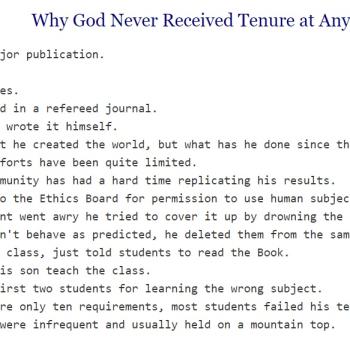As someone whose life’s work is dedicated to studying things I love, I had to share this great article on the subject, “Games Criticism is a Kindness.” Here’s an excerpt:
Criticism, it sometimes seems, is a dirty word. I don’t think that’s true. I think that whether you are praising something or condemning it, criticism is an act of love.
I suspect that the word “criticism,” when read in isolation, evokes a negative connotation in many people’s minds. An image forms: a parent or teacher scolding a child for small mistakes. Eat your peas, cross your t’s, and sit up straight, you little bastard. The image forms, because placing ourselves in positions where we can receive criticism of something we’ve made or enjoyed necessarily means assuming a place of vulnerability. The compliments never land as hard as negatives. We internalize the former without much fanfare; we spend sleepless nights obsessing over the latter. Conversations replay in our minds as we search, l’esprit de l’escalier style, for the responses that we could not find in the moment of criticism. When we see criticism of the things we love—books, movies, games—the process plays out as if we’d been personally attacked.
There is a reason “fan” is a shortened form of “fanatic.” To be a fan of something is to devote yourself to it. To love culture is to give yourself up to it entirely. Identities are forged and allegiances declared. This makes sense; art moves us in very real ways and it doesn’t matter if that’s Shakespeare or porno. There’s no such thing as “no redeeming value.” Created works evoke strong emotional responses. Luke Skywalker is not just a hero. He is the Hero to an entire generation of movie-goers. So it is with any art. Our personal responses drive our fanaticism. That fanaticism is, particularly now in age where more and more media is the product of a scant handful of corporations, a manufactured creation of marketing experts, focus-testing, surveys and formulas. Consumer culture and nerd culture is viciously shaped by corporations and companies who carefully construct their work such that people become fanatics. That’s the goal. Our emotions are strong but they are often accounted for by men and women in boardrooms. They’ve become very good at creating devotion, they are experts at securing our loyalties. And so we tie ourselves up in franchises, of which a startling amount of our culture is part of, and perceive criticism of our cultural touchstones as we perceive criticism of ourselves: an attack, a nit-pick. In the worst cases, criticism is perceived as an assault on our values.
Criticism is none of these things. Criticism, applied in good faith, is an act of empathy and kindness. It is a rejection of fanaticism. It rejects the schemes of money-men. It rejects the snobbish suggestion that there is “high art” and “low art.” Criticism is an egalitarian act by which all work is treated as equally valid. There is an exchange. That exchange is more respectful of artists and creators than blind praise. When we apply criticism to art, we enter a conversation. One where we examine why we were swept off our feet to begin with.
The tension of criticism is not the tension between compliment and condemnation. Rightfully applied, these things are not in competition with each other. They are two sides of the same coin. They are necessary components of holistically engaging with the things we love and, yes, sometimes the things we hate. Applying either in the excess is a mistake. If I were to talk about friendships, it would not be controversial to say that a good friend is one who tells the truth. Cheer too hard as a friend, and you can become an enabler. If you neg someone at every opportunity, you cause harm. These are the extremes, but, in friendship, “honesty is the best policy.” Criticism is an act of friendship.
Click through to read the rest.
Here’s something that I was tempted to include in a chapter I’ve been working on about one point of intersection between the Bible and science fiction. I have decided not to include it there, since it is at best a tangent. And so I thought I would at least mention it here. I wonder whether it is just me, or whether these kinds of thoughts would occur to any diehard sci-fi fan who reads David Bentley Hart’s discussion of the way apologists and theologians sometimes make assertions about the nature of souls and what they can and cannot do. He writes, “a sufficiently thorough conditioning can make an otherwise sound mind perceive even the most ostentatiously absurd proposition to be the very epitome of rational good sense. In fact, where the absurdity proves only slight, the mind that has been trained most thoroughly will, as often as not, fabricate further and more extravagant absurdities, in order to secure the initial offense against reason within a more encompassing and intoxicating atmosphere of corroborating nonsense. Sooner or later, it will all seem to make sense, simply through ceaseless repetition and restatement and rhetorical reinforcement. The most effective technique for subduing the moral imagination is to teach it to mistake the contradictory for the paradoxical, and thereby to accept incoherence as profundity, or moral idiocy as spiritual subtlety. If this can be accomplished with sufficient nuance and delicacy, it can sustain even a very powerful intellect for an entire lifetime” (Hart, That All Shall Be Saved, pp.18-19). Am I the only one who thinks there could be an edited volume with the title Theological MacGuffins?
Very often, we start from the premise that basic theological (or in-world sci-finarrative) assertions and narratives are true, and from there we make as many additional assertions we may feel the need to in order to the system as a complete package to appear coherent. Unfortunately the result is often a defense of the patently self-contradictory, and at best, the weaving of a system of ever-increasing complexity in an effort to render details coherent that could perhaps be understood differently, and need not have been part of the picture to begin with.
Much theological assertion, to put it another way, resembles an attempt to explain the physics of the Star Wars galaxy so that the possibility of sound in space, the Force, and lightsabers all make sense. Or more directly relevant to the subject of this chapter, some theological systems can resemble efforts to explain why Spock could pass on his katra to McCoy in Wrath of Khan—for instance, why he needed a biological receptacle for his soul to survive—while at the same time explaining why Roger Korby’s soul could not do likewise in the TOS episode “What are Little Girls Made Of?” Science fiction fandom provides countless examples of this not only in the form of canonical materials, but also in abundant fan fiction and headcanon. In much the same way, the very act of considering the possibility that our frameworks for interpreting the Bible and our complex systems aimed at rendering our theologies coherent may be a form of “headcanon” itself offers a metacognitive awareness that can be valuable to theological thinking as well as scriptural hermeneutics. If nothing else, it confronts us with the crucially important question of whether the crafting of metanarratival frameworks that harmonize seemingly disparate details is the best way of appreciating a collection of stories, or whether such literalism more often than not distracts from the value of the stories as stories with all their symbolic depth and resonances.
The longevity of a number of franchises also allows an awareness to develop of the fact that no tradition of storytelling involving numerous authors spanning multiple generations will achieve the level of narrative unity and coherence that many fans and adherents desire. No one I know of argues that the universe simply appeared black and white in the early days of the Doctor’s sojourn on Earth with his granddaughter and his wanderings that followed. Yet in some fundamentalist fan circles within sci-fi and religion, pressing that insight too far meets with resistance. To say “that is how future technology was imagined in the 1960s” and be satisfied with that as an explanation is as abhorrent to some fans of Doctor Who and Star Trek as saying “that is how the afterlife was envisaged—or not envisaged—in ancient Israel and considering that an adequate explanation of details within the Bible. Reading sci-fi and the Bible in tandem can make us more aware of the difference between explanations in terms of authorial intent or cultural and historical context, and explanations within the realm of a story. That the same efforts may be required to render an ongoing or long-running saga coherent whether it is a sci-fi franchise or biblical literature we are talking about may itself provide important clues about what the Bible is and how we should think about it. Those who balk at that suggestion may nonetheless hopefully henceforth notice the ways their response to this assertion and their efforts to defend against it themselves resemble one form of popular sci-fi fan endeavor.
Also relevant:
When the Marvel Cinematic Universe meets sports fandom/nerdiness
https://www.patheos.com/blogs/lovejoyfeminism/2020/02/young-earth-creationism-the-ultimate-fandom.html
And of course don’t forget this:
https://www.youtube.com/watch?v=gNtnN_DiP3o
Finally, one great pleasure of doing research on subjects such as Battlestar Galactica is finding out more including things that were not made explicit when the show aired. I’m referring here in particular to the crashed ship in “War of the Gods” and what it was and who was inside it. I had wrongly surmised it was the remains of the Pegasus, as apparently many others did, but that wasn’t the meaning that was intended. Good to finally know!













